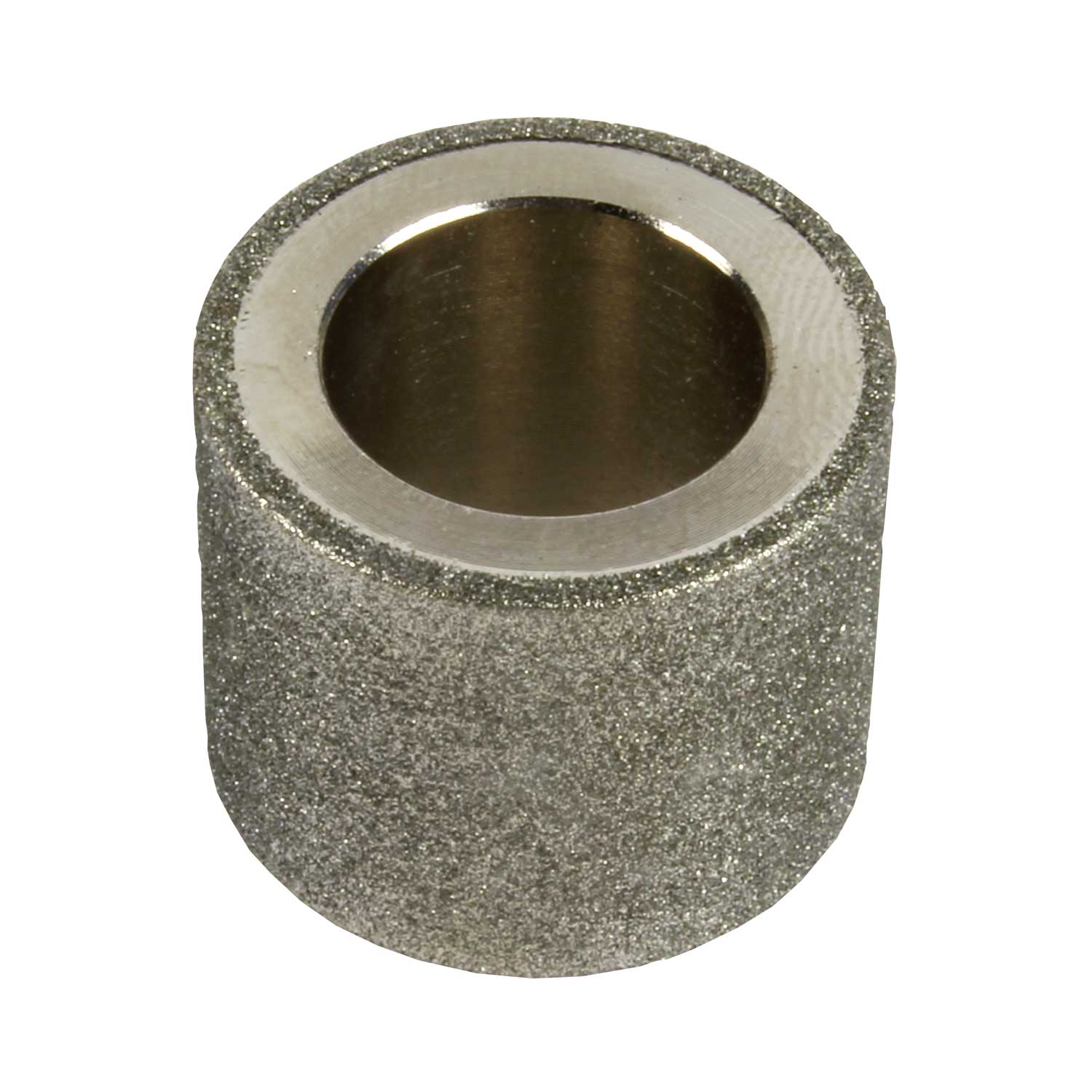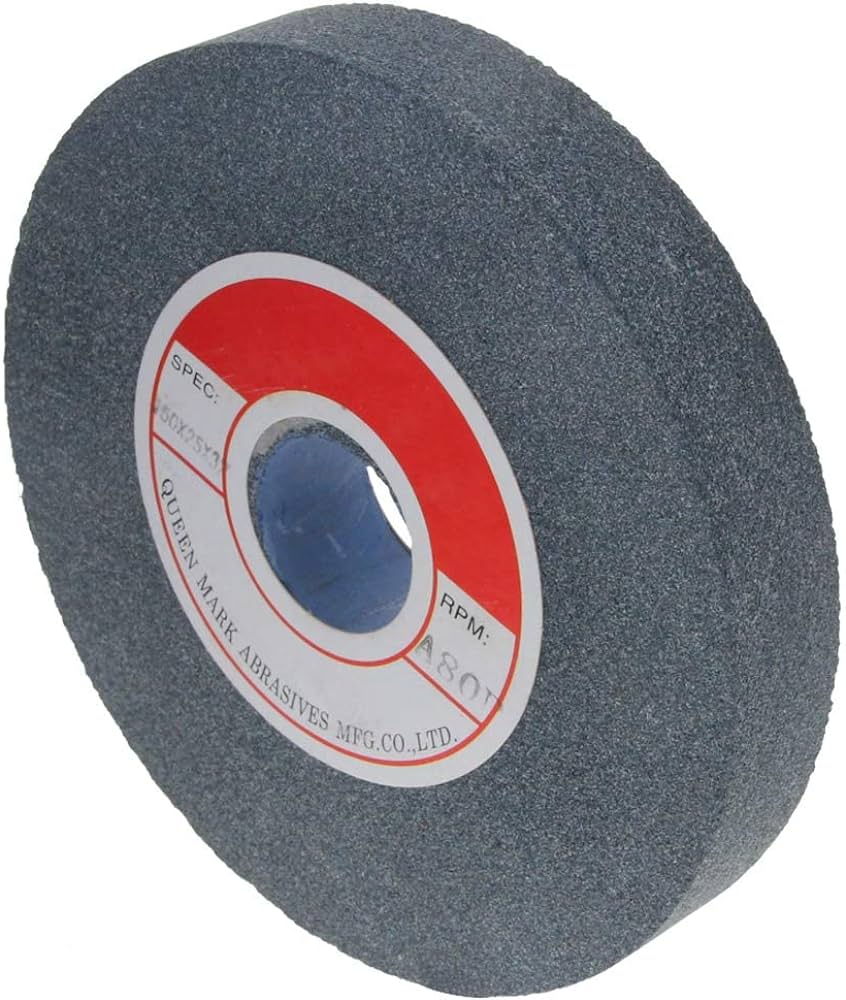Are you wondering what grit grinding wheel to use for sharpening drill bits? Look no further! Whether you’re a seasoned handyman or just starting your DIY journey, finding the right tool for the job is essential. In this guide, we’ll explore the world of grit grinding wheels and help you discover which one is best for sharpening drill bits.
Now, you might be thinking, “Why does the grit of a grinding wheel matter?” Well, my friend, the grit determines the coarseness of the wheel’s surface, which directly affects the sharpening process. From coarse to fine, different grit sizes offer varying levels of abrasiveness, making each wheel suited for specific materials and tasks.
So, get ready to dive into the fascinating realm of grinding wheels and uncover the secret to choosing the perfect grit for sharpening drill bits. Let’s sharpen our knowledge together and become drill bit sharpening experts!

Choosing the Right Grit Grinding Wheel for Sharpening Drill Bits
Welcome to our guide on choosing the right grit grinding wheel for sharpening drill bits. When it comes to keeping your drill bits sharp and in optimal condition, the right grinding wheel can make all the difference. In this article, we will explore the different grit options available, how to select the right one for your needs, and best practices for sharpening drill bits effectively. So, let’s dive in and discover the world of grit grinding wheels!
The Importance of Grit Size
Grit size refers to the size of the abrasive particles on the grinding wheel. It plays a crucial role in determining the level of aggressiveness and precision of the sharpening process. Generally, lower grit numbers like 36 or 60 are recommended for rough grinding and material removal, while higher grit numbers like 180 or 220 are better suited for fine sharpening and achieving a polished edge.
When it comes to sharpening drill bits, it’s essential to strike a balance between removing enough material to restore the cutting edge and maintaining the overall shape and integrity of the bit. Too coarse a grit can remove excessive amounts of metal, resulting in a shorter lifespan for the drill bit. On the other hand, using a grit that is too fine may not effectively remove the dull areas or restore the sharpness you desire.
To determine the optimal grit size for your drill bit sharpening needs, consider the state of your bits and the level of sharpness you want to achieve. If your bits are heavily worn or damaged, starting with a coarser grit would be ideal. For regular maintenance and touch-ups, a finer grit would be suitable.
Understanding the Grit Scale
The grit scale is a system used to classify the size of abrasive particles. It is typically represented by a number, which indicates the number of openings per linear inch in the screen used to grade the particles. The lower the number, the coarser the grit, and vice versa.
For drill bit sharpening, the commonly available grit sizes range from 36 to 220. Here’s a quick breakdown of the grit scale and their recommended applications:
- Grit sizes below 100: Coarse grinding and material removal.
- Grit sizes between 100 and 150: General-purpose sharpening and shaping.
- Grit sizes between 150 and 220: Fine sharpening and polishing.
Keep in mind that these are general guidelines, and the specific needs of your drill bits may vary. Experimenting with different grit sizes can help you find the ideal one for your sharpening requirements.
The Right Wheel Material for Drill Bit Sharpening
While grit size is important, it shouldn’t be the only factor to consider. The material of the grinding wheel also plays a significant role in achieving optimal results when sharpening drill bits.
For drill bit sharpening, diamond or cubic boron nitride (CBN) wheels are popular choices. These materials offer excellent durability and heat resistance, making them well-suited for the sharpening process. They also provide consistent and precise results, ensuring that your drill bits are sharpened accurately.
When selecting a grinding wheel material, consider the type of drill bits you will be sharpening. Diamond wheels work well for carbide-tipped drill bits, while CBN wheels are ideal for high-speed steel and cobalt steel bits. Investing in a quality grinding wheel made of the appropriate material will ensure a longer lifespan and better performance.
Sharpening Tips and Techniques
Now that you have a better understanding of grit size and wheel material, let’s explore some sharpening tips and techniques to help you achieve the best results:
- Always follow the manufacturer’s instructions and guidelines when using a grinding wheel.
- Inspect your drill bits before sharpening to identify any chips, cracks, or excessive wear that may require additional attention.
- Use a dressing stone to clean and true the grinding wheel periodically to maintain its effectiveness.
- Hold the drill bit at the correct angle when sharpening to ensure the desired cutting edge geometry.
- Apply even pressure and make consistent passes across the wheel to achieve a uniform sharpening across the bit.
- Consider using a jig or guide to help you maintain a consistent angle and improve accuracy.
- Take breaks during the sharpening process to prevent the bit and grinding wheel from overheating.
- After sharpening, always verify the sharpness of the drill bit before using it, and make any necessary adjustments if needed.
- Properly clean and store your grinding wheel and drill bits to maintain their condition and longevity.
By following these tips and techniques, you can ensure that your drill bits are sharpened effectively and ready for use.
Additional Tips for Drill Bit Sharpening
Now that you have a solid understanding of grit size, wheel material, and sharpening techniques, here are a few additional tips to enhance your drill bit sharpening experience:
Invest in a Dedicated Grinding Wheel
Consider purchasing a dedicated grinding wheel specifically for drill bit sharpening. This will allow you to have a designated wheel for sharpening, eliminating the need to constantly switch between different grinding tasks.
Regular Maintenance is Key
Regularly maintaining your drill bits and sharpening them as needed will not only extend their lifespan but also ensure optimal performance. Developing a routine maintenance schedule can save you time, effort, and money in the long run.
Consider Professional Sharpening Services
If you have a large number of drill bits or prefer to leave the sharpening to the experts, consider utilizing professional sharpening services. These services have specialized equipment and expertise to ensure your drill bits are sharpened accurately and efficiently.
In conclusion, choosing the right grit grinding wheel for sharpening drill bits is crucial for achieving optimal results. By understanding the importance of grit size, the grit scale, and the right wheel material, you can make informed decisions to enhance your sharpening process. Additionally, following the recommended sharpening techniques and considering additional tips will further improve your drill bit sharpening skills. So, grab the right grinding wheel, get sharpening, and enjoy efficient and precise drilling with sharp drill bits!
Key Takeaways: What Grit Grinding Wheel for Sharpening Drill Bits?
- Choosing the right grit grinding wheel is crucial for sharpening drill bits.
- For normal drill bits, a medium grit grinding wheel with around 80-120 grit is recommended.
- For harder drill bits like cobalt or carbide, a fine grit grinding wheel with around 220-320 grit is recommended.
- It’s important to match the grit to the hardness of the drill bit material for optimal results.
- Always follow the manufacturer’s recommendations for the proper grit grinding wheel to use.
Frequently Asked Questions
Welcome to our Frequently Asked Questions section, where we provide answers to common inquiries about choosing the right grit grinding wheel for sharpening drill bits. Whether you’re a DIY enthusiast or a professional, we’re here to help you make an informed decision for your sharpening needs.
1. What is the importance of using the correct grit grinding wheel for sharpening drill bits?
Using the correct grit grinding wheel is crucial for sharpening drill bits effectively. The grit determines the coarseness or fineness of the wheel, which impacts the sharpening process. A finer grit is ideal for achieving a sharper cutting edge, while a coarser grit removes material quickly but may not provide as refined of a cutting edge.
For drill bits, a medium grit wheel, such as 80 or 100, is commonly recommended. This grit strikes a balance between efficiently removing material to reshape the bit and creating a sharp cutting edge.
2. Can I use any grinding wheel for sharpening drill bits?
While grinding wheels are versatile tools, not all wheels are suitable for sharpening drill bits. When selecting a grinding wheel for drill bit sharpening, it’s essential to choose one specifically designed for that purpose. These wheels have the necessary characteristics to handle the metal composition and shape of drill bits.
Avoid using grinding wheels meant for other applications, as they may not have the correct grit, bonding, or shape to properly sharpen drill bits. Using the wrong wheel can result in a subpar sharpening outcome or damage to the drill bit.
3. What grit range should I consider when selecting a grinding wheel?
The grit range you should consider for sharpening drill bits depends on the level of sharpening required and the material you’re working with. For general-purpose sharpening of drill bits made from common metals, a grit range of 80 to 120 should suffice. This range offers a good balance between shaping the bit and creating a sharp cutting edge.
If you’re working with harder materials or need a finer cutting edge, consider opting for a higher grit range, such as 150 to 180. Take into account the type of material, desired level of sharpness, and the specific drill bit being sharpened.
4. How do I know if the grinding wheel is compatible with my drill bit?
To ensure compatibility between the grinding wheel and your drill bit, there are a few factors to consider. Firstly, check if the wheel is designed for sharpening the type of drill bit you have, such as twist bits, masonry bits, or spade bits. Different drill bit types may require specific grinding wheel profiles.
Additionally, consider the size and shape of the wheel, ensuring it aligns with the size and shape of the drill bit. If you’re unsure about compatibility, consult the manufacturer’s guidelines or reach out to an expert for assistance.
5. Are there any safety precautions I should take when using a grinding wheel to sharpen drill bits?
Absolutely! Safety should always be a top priority when working with grinding wheels. It’s crucial to wear safety goggles or a face shield to protect your eyes from sparks and debris. Additionally, ensure you’re working in a well-ventilated area to prevent inhaling any harmful particles.
Always follow the manufacturer’s instructions for proper usage and adhere to any recommended safety precautions. Use the appropriate guards and supports provided with your grinding wheel, and never force the drill bit against the wheel. Regularly inspect the wheel for any signs of damage or wear, and replace it if necessary.

Summary
So, what grit grinding wheel should you use to sharpen drill bits? Well, it depends on the condition of the bit.
If the bit is in decent shape, a 120- or 180-grit wheel will work just fine. But if the bit is really dull or damaged, you’ll want to start with a coarser 60- or 80-grit wheel to remove more material. Then, you can switch to a finer grit wheel to achieve a sharper edge. Just remember to always use water or coolant to keep the bit and wheel cool during the sharpening process.
